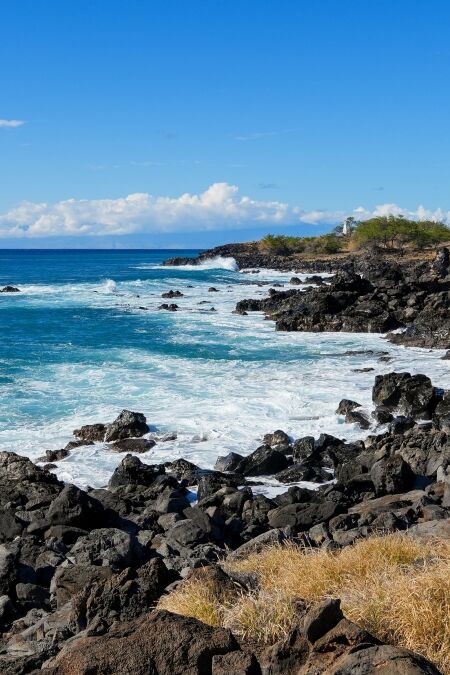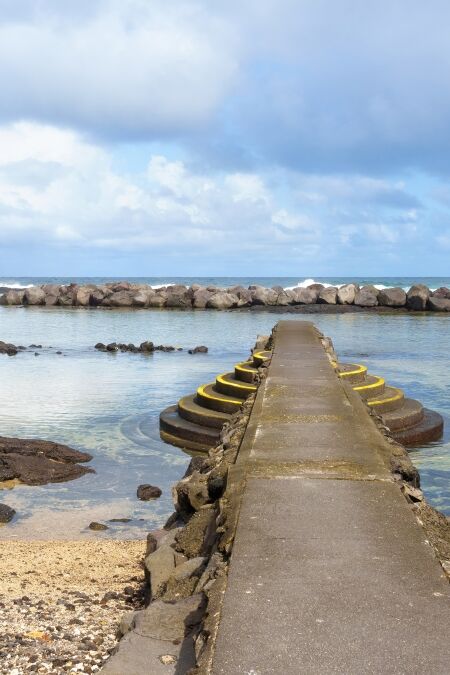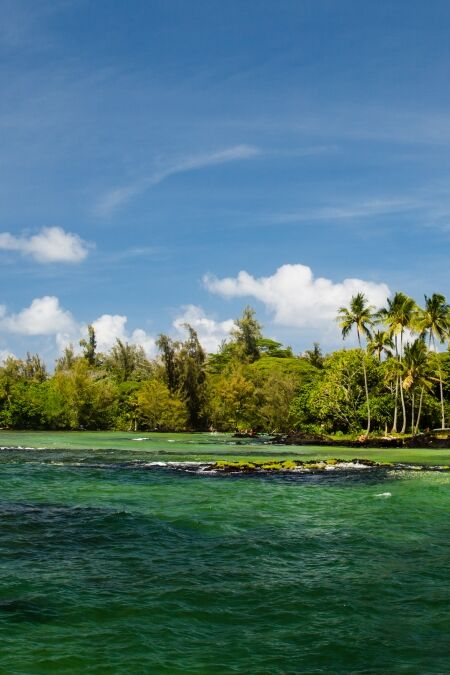Waianapanapa State Park is a must-see destination along Maui’s famous Road to Hana, known for its breathtaking natural beauty and rich cultural history. This stunning park is home to a striking black sand beach, sea caves, lava tubes, and scenic hiking trails that offer unforgettable views of the rugged coastline. This guide will provide everything you need to know about visiting Waianapanapa State Park, from its key attractions to helpful travel tips.
Highlights
- Waianapanapa’s iconic black sand beach, Pa’iloa Beach, is a must-see. The striking contrast of the dark volcanic sand against the turquoise waters offers an unforgettable visual experience.
- Explore the park’s scenic coastal hiking trails, which lead to breathtaking cliffs, sea caves, and lava formations.
- Discover hidden freshwater caves that provide a refreshing spot to explore and cool off.
- Keep an eye out for native Hawaiian wildlife, including seabirds and sometimes even the endangered Hawaiian monk seal.
- The park offers picnic areas with stunning ocean views and camping facilities for those looking to stay overnight.
History
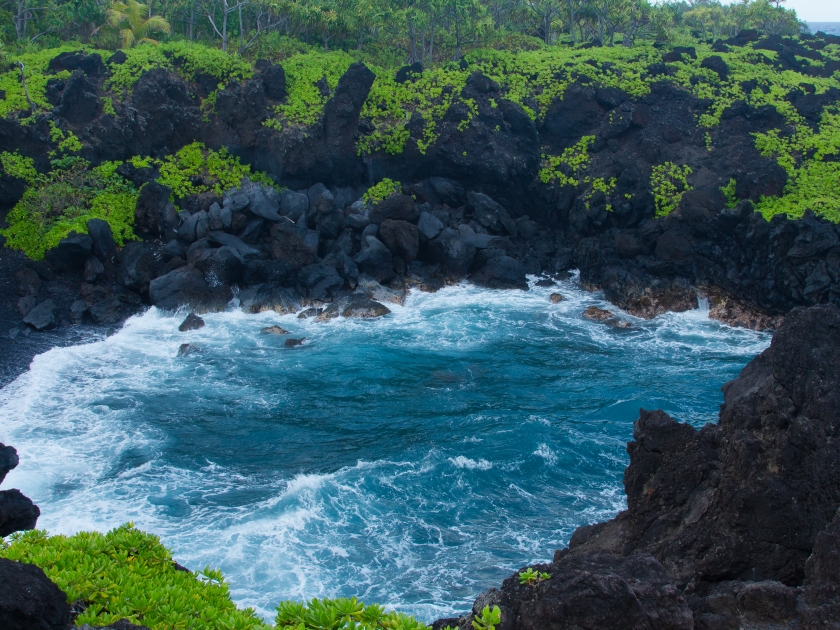
Volcanic Origins and Rugged Landscape
Waianapanapa State Park’s dramatic landscape is a direct result of volcanic activity from nearby volcanoes, including Haleakalā. Over time, lava flows have shaped the park’s rugged coastline, creating unique geological features like lava tubes and the striking black sand beach. The black sand, made up of tiny volcanic glass fragments called obsidian, gives the beach its iconic look and is a major draw for visitors. The park’s raw, volcanic beauty offers a glimpse into Maui’s natural history.
Deep Roots in Ancient Hawaiian History
Waianapanapa holds a deep connection to Hawaiian history and culture. For centuries, this area was home to ancient Hawaiian communities, and remnants of these early settlements are still visible throughout the park. The park’s name, “Waianapanapa,” meaning “glistening fresh water” in Hawaiian, highlights the importance of the freshwater pools that were once essential for sustaining life in the region. Visitors can explore these cultural treasures while learning about the way of life that thrived here long ago.
Cultural Highlights:
- Heiau: The park features a heiau, an ancient Hawaiian temple used for religious ceremonies and offerings, providing a sacred space for reflection.
- Burial Sites: Numerous ancient burial sites found within the park shed light on the burial traditions of early Hawaiians.
- Historical Trails: The Piilani Trail, once a vital route for travel, fishing, and resource gathering, still winds through the park, allowing visitors to walk in the footsteps of ancient Hawaiians.
Modern-Day Significance
Today, Waianapanapa State Park remains an important cultural and natural landmark. Visitors can explore the park’s fascinating geological features, while also gaining insight into its rich historical and cultural heritage. The park is home to a variety of native Hawaiian plants and animals, including endangered sea turtles and native birds, making it a must-see destination for nature enthusiasts and history buffs alike.
Things to Do
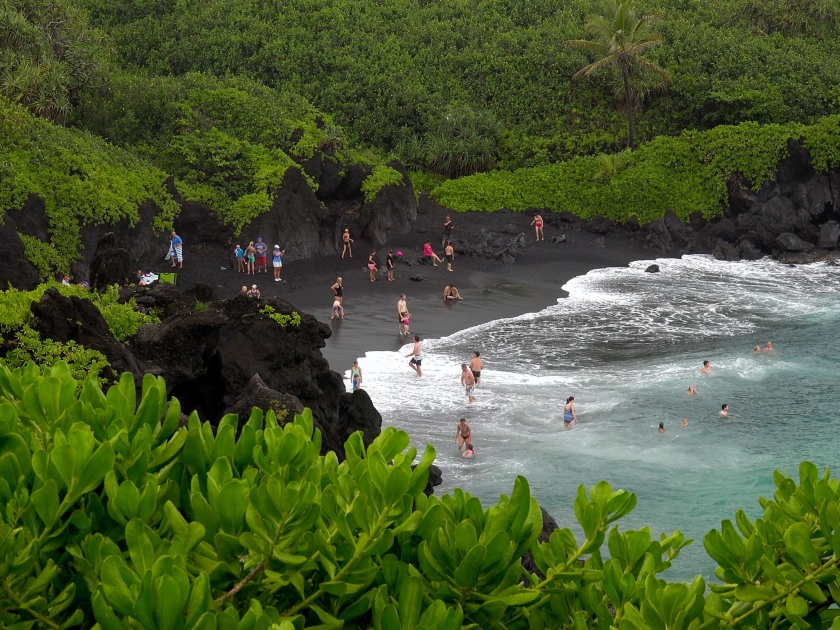
Swimming at Black Sand Beach (Honokalani Beach)
Honokalani Beach, the park’s famous black sand beach, was formed from volcanic activity that created tiny lava rock fragments, offering a dramatic contrast to the lush green surroundings. Visitors can swim in the clear waters, sunbathe on the soft black sands, or explore the tide pools along the shore. For photographers, this beach is a dream with its unique color palette and rugged landscape, best captured during the early morning or late afternoon for fewer crowds and ideal lighting.
Exploring Caves and Lava Tubes
Waianapanapa State Park is also home to fascinating sea caves and freshwater lava tubes, adding a mystical element to the landscape. These caves are steeped in Hawaiian legends, including the story of Queen Popoalaea, which gives them a cultural significance beyond their natural beauty. While exploring, visitors should proceed with caution due to slippery rocks and uneven surfaces, and it’s recommended to wear sturdy shoes and bring a flashlight for a safer adventure.
Hiking Trails
Waianapanapa State Park offers several scenic hiking trails, such as the Piilani Trail, which leads hikers along the stunning coastline. Expect breathtaking ocean views, blowholes, and native Hawaiian plants along the way. These trails vary in difficulty, with some being easy for beginners and others more challenging, so it’s essential to wear proper footwear and bring plenty of water.
Camping
For those looking to immerse themselves in nature, camping at Waianapanapa is an unforgettable experience. The park offers both tent camping and cabins, allowing visitors to fall asleep to the sounds of the ocean and wake up to the park’s stunning sunrise. Reservations are required, and campers should come prepared for the park’s remote setting.
Tips for Visiting
- Pack essentials: Bring sunscreen, water, snacks, and sturdy shoes for hiking and exploring.
- Check surf conditions: Always verify ocean conditions before swimming or snorkeling to ensure safety.
- Book in advance: Reservations are required for camping and parking, so plan to secure your spot.
- Arrive early: Visit in the early morning for fewer crowds, especially at the black sand beach and popular trails.
- Respect cultural sites: Follow guidelines to preserve the park’s natural and cultural heritage.
- Stay on marked trails: Stick to designated paths to protect the environment and avoid dangerous areas.
- Bring a flashlight: Essential for exploring lava tubes and caves safely.
- Be prepared for limited amenities: There are few facilities, so come prepared with everything you need for the day.
Best Times to Visit
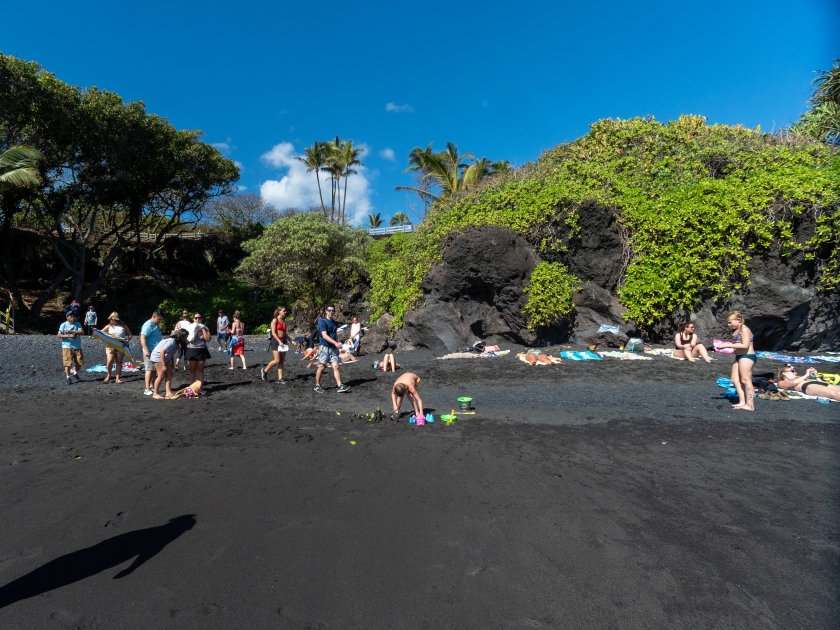
The best time to visit Waianapanapa State Park is during the early morning or late afternoon when the park is less crowded, providing a more peaceful experience at the black sand beach and hiking trails. The weather in Maui is generally pleasant year-round, but visiting during the dry season from April to October ensures ideal conditions for outdoor activities. Avoid peak midday hours for cooler temperatures and better lighting for photography.
Nearby Attractions
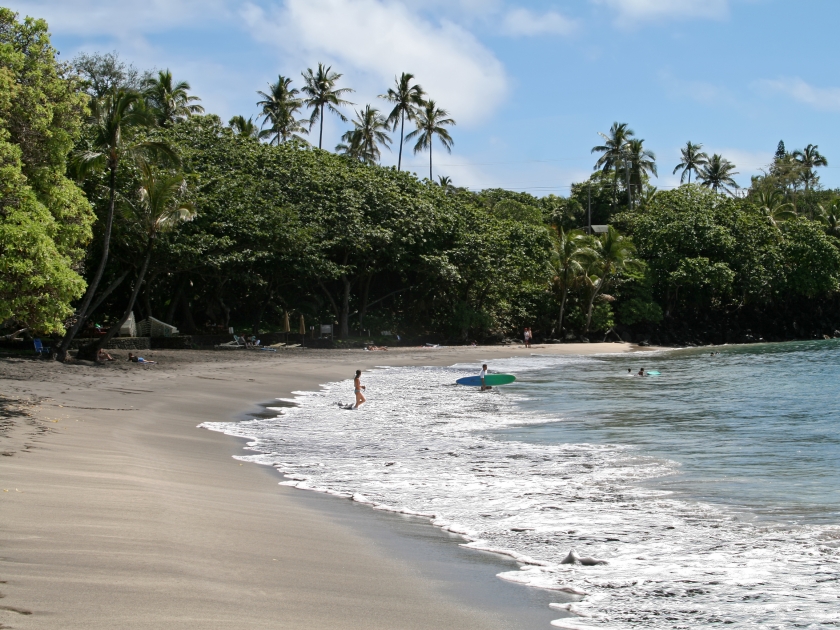
After exploring Waianapanapa State Park, visitors can continue their adventure along the Road to Hana by visiting nearby attractions like the charming Hana Town, the serene Hana Bay, and the picturesque Hamoa Beach. Each of these spots offers a unique glimpse into Maui’s natural beauty and local culture. Whether you’re looking to relax on a quiet beach, explore the historic town, or take in more scenic views, these destinations make for the perfect follow-up to your time at Waianapanapa.
Frequently Asked Questions (FAQs)
Waianapanapa State Park is known for its striking black sand beach, lava tubes, sea caves, and scenic coastal hiking trails along Maui’s famous Road to Hana.
Waianapanapa State Park is located along the Hana Highway (HI-360), approximately 52 miles from Kahului, making it a popular stop on the Road to Hana route.
Yes, reservations are required to visit Waianapanapa State Park, including parking permits for non-residents, to help manage the number of visitors and protect the park’s natural resources.
Visitors can enjoy swimming at the black sand beach, hiking coastal trails, exploring sea caves and lava tubes, and taking in the park’s stunning coastal views.
Yes, Waianapanapa State Park offers both tent camping and cabin rentals, allowing visitors to fully immerse themselves in the park’s natural beauty.
Swimming is allowed at the park’s black sand beach, but conditions can vary, so it’s important to check the surf and weather before entering the water.
How to Get There
By Car
To reach Waianapanapa State Park by car, start from the town of Hana. Take the Hana Highway (Route 360) and head north for about 3 miles. The park entrance will be on your left. There is parking available within the park, but it’s best to arrive early, as this popular destination can fill up quickly.
By Bus
If you prefer public transportation, several bus services operate on the Hana Highway, providing access to Waianapanapa State Park. The Maui Bus offers a route that connects various towns on the island. Be sure to check the bus schedule in advance, as services may be limited. Once you arrive at the designated stop, it’s a short walk to the park entrance.
Waianapanapa: A Must-See on Maui’s Rugged Shore
Waianapanapa State Park is a place where Maui’s wild beauty and rich culture come to life, making it an essential stop on any island adventure. From the striking black sand beach to ancient lava tubes and scenic trails, this park offers a blend of nature, history, and outdoor fun that’s hard to find anywhere else. Whether you’re hiking, snorkeling, or simply soaking in the views, Waianapanapa invites you to experience Maui’s untamed spirit firsthand—add it to your itinerary for an unforgettable journey.


